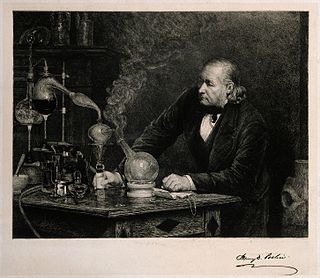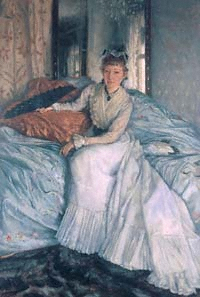
Earl Grey is a title in the peerage of the United Kingdom. It was created in 1806 for General Charles Grey, 1st Baron Grey. In 1801, he was given the title Baron Grey of Howick in the County of Northumberland, and in 1806 he was created Viscount Howick in the County of Northumberland, at the same time as he was given the earldom. A member of the prominent Grey family of Northumberland, Earl Grey was the third son of Sir Henry Grey, 1st Baronet of Howick.

Marquess of Anglesey is a title in the Peerage of the United Kingdom. It was created in 1815 for Henry Paget, 2nd Earl of Uxbridge, a hero of the Battle of Waterloo, second in command to the Duke of Wellington. The Marquess holds the subsidiary titles of Earl of Uxbridge, in the County of Middlesex, in the Peerage of Great Britain (1784), Baron Paget, de Beaudesert, in the Peerage of England (1553), and is also an Irish Baronet, of Plas Newydd in the County of Anglesey and of Mount Bagenall in the County of Louth.

Earl of Chichester is a title that has been created three times, twice in the Peerage of England and once in the Peerage of the United Kingdom. The current title was created in the Peerage of the United Kingdom in 1801 for Thomas Pelham, 2nd Baron Pelham of Stanmer.

Earl of Kimberley, of Kimberley in the County of Norfolk, is a title in the Peerage of the United Kingdom. It was created in 1866 for the prominent Liberal politician John Wodehouse, 3rd Baron Wodehouse. During his long political career, he notably held office as Lord Lieutenant of Ireland, Secretary of State for the Colonies, Secretary of State for India and Secretary of State for Foreign Affairs. He was succeeded by his son, the second Earl. At first a Liberal like his father, he later joined the Labour Party, becoming the first Labour member of the House of Lords. His eldest son, the third Earl, represented Norfolk Mid in the House of Commons as a Liberal. Since 2002, the titles are held by the latter's grandson, the fifth Earl.

Earl of Cottenham, of Cottenham in the County of Cambridge, is a title in the Peerage of the United Kingdom. It was created in 1850 for the prominent lawyer and Whig politician Charles Pepys, 1st Baron Cottenham. ) He served as Lord Chancellor from 1836 to 1841 and from 1846 to 1850. Pepys had already been created Baron Cottenham, of Cottenham in the County of Cambridge, in 1836, and was made Viscount Crowhurst, of Crowhurst in the County of Surrey, at the same time he was given the earldom. These titles are also in the Peerage of the United Kingdom. The viscountcy is used as a courtesy title for the Earl's eldest son and heir apparent.

Baron Kilmaine is a title that has been created twice, both times in the Peerage of Ireland. The first creation came in 1722 in favour of the soldier the Hon. James O'Hara. Two years later he succeeded his father as Baron Tyrawley. However, both titles became extinct on the second Baron Tyrawley's death in 1773 without legitimate sons.

Baron Waterpark of Waterpark in the County of Cork, is a title in the Peerage of Ireland. It was created in 1792 for Sarah, Lady Cavendish, in honour of her husband, Sir Henry Cavendish, 2nd Baronet. Sir Henry Cavendish was a politician who represented Lismore and Killybegs in the Irish House of Commons and served as Vice-Treasurer of Ireland and as Receiver-General of Ireland. From 1768 to 1774 he sat in the British House of Commons for Lostwithiel.
Baron Ravensworth, of Ravensworth Castle in the County Palatine of Durham and of Eslington Park in the County of Northumberland, is a title in the Peerage of the United Kingdom.

Baron Bethell, of Romford in the County of Essex, is a title in the Peerage of the United Kingdom. It was created in the 1922 Dissolution Honours for the banker and Liberal politician Sir John Bethell, 1st Baronet, who had previously represented Romford and East Ham North in Parliament. He had already been created a Baronet, of Romford in the County of Essex, on 26 June 1911.

Baron Rothschild, of Tring in the County of Hertfordshire, is a title in the Peerage of the United Kingdom. It was created in 1885 for Sir Nathan Rothschild, 2nd Baronet, a member of the Rothschild banking family. He was the first Jewish member of the House of Lords not to have previously converted to Christianity. The current holder of the title is Jacob Rothschild, 4th Baron Rothschild, who inherited the barony in 1990.

Baron Riverdale, of Sheffield in the County of York, is a title in the Peerage of the United Kingdom. It was created on 27 June 1935 for the Sheffield steel manufacturer Sir Arthur Balfour, 1st Baronet, Chairman of Arthur Balfour & Co Ltd.

Charles Benjamin Bright McLaren, 1st Baron Aberconway,, known as Sir Charles McLaren, 1st Baronet, between 1902 and 1911, was a Scottish jurist and Liberal Party politician. He was a landowner and industrialist.

Baron Dufferin and Claneboye, of Ballyleidy and Killyleagh in County Down, Northern Ireland, is a title in the Peerage of Ireland. It was created on 30 July 1800 for Dame Dorcas Blackwood, widow of Sir John Blackwood, 2nd Baronet, Member of the Irish Parliament for Killyleagh and Bangor, in return for support for the Union of Ireland and the United Kingdom.

Bodnant Garden is a National Trust property near Tal-y-Cafn, Conwy, Wales, overlooking the Conwy Valley towards the Carneddau mountains.

Lady Rose Mary Primrose McLaren was a British aristocrat, the fourth daughter of the 6th Marquess of Anglesey.

Henry Davis Pochin was a British industrial chemist. He invented a process that enabled white soap to be made and a means of using china clay to create better quality paper. He owned several china clay pits in Cornwall, and a mine at Tredegar in South Wales, and was briefly a Liberal Member of Parliament. His wife was Agnes Pochin who was a leading suffragist.

Henry Duncan McLaren, 2nd Baron Aberconway, was a British politician, horticulturalist and industrialist. He was the son of Charles McLaren, 1st Baron Aberconway and Laura Pochin.

Laura Elizabeth McLaren, Baroness Aberconway CBE, DStJ was a British suffragist, author and horticulturalist.

Charles Melville McLaren, 3rd Baron Aberconway, was a British industrialist and horticulturalist. He was the son of Henry McLaren, 2nd Baron Aberconway, and Christabel Macnaghten. He died in 2003.
Aberconway, the anglicised form of the Welsh placename Aberconwy, may refer to:













